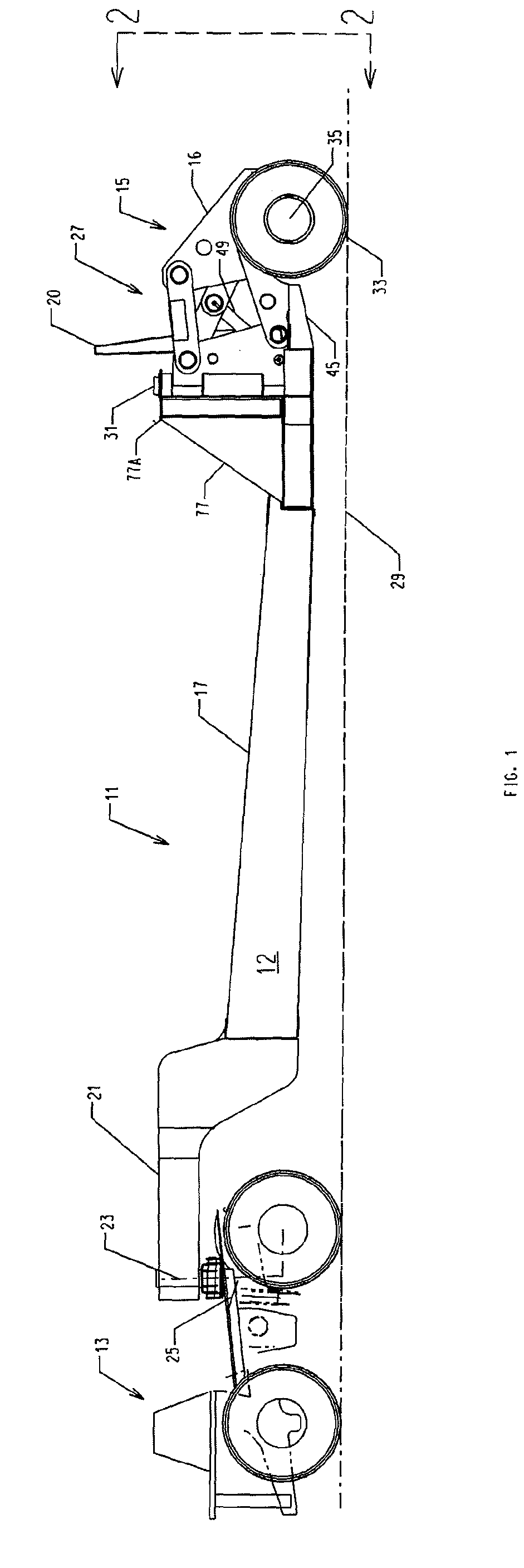Method and apparatus for transitioning a heavy equipment hauling rear loading trailer between transport and loading positions
a technology for heavy equipment and trailers, applied in the field of trailers, can solve the problems of cumbersome and time-consuming loading process, difficult loading of equipment onto trailers, and extreme force on both the edge of trailers and undercarriages, and achieve the effect of minimizing or eliminating loading apex, and minimizing or eliminating load concentration
- Summary
- Abstract
- Description
- Claims
- Application Information
AI Technical Summary
Benefits of technology
Problems solved by technology
Method used
Image
Examples
Embodiment Construction
[0061]Turning to the drawings and referring first to FIGS. 1A through 1O, a trailer 11 is supported by a tractor 13 at the front of the trailer 11 and by a pair of axle wheel assemblies 15 at the back of the trailer 11. In the following description of the axle wheel assemblies 15, reference is often made to one of the axle wheel assemblies 15 with the understanding that each of the axle wheel assemblies 15 is the mirror image of the other. Those skilled in the art of designing trailers of the type illustrated and described herein will appreciate that the following description referencing one of the axle wheel assemblies 15 applies equally well to the other axle wheel assembly 15.
[0062]The trailer 11 includes trailer chassis 12, having a deck 17 for carrying a load such as a self-propelled, excavator 19 shown in FIGS. 1E through 1O. In the illustrated embodiment, the deck 17 of the trailer chassis 12 is angled so as to provide a substantially flat single planar surface between the de...
PUM
 Login to View More
Login to View More Abstract
Description
Claims
Application Information
 Login to View More
Login to View More - R&D
- Intellectual Property
- Life Sciences
- Materials
- Tech Scout
- Unparalleled Data Quality
- Higher Quality Content
- 60% Fewer Hallucinations
Browse by: Latest US Patents, China's latest patents, Technical Efficacy Thesaurus, Application Domain, Technology Topic, Popular Technical Reports.
© 2025 PatSnap. All rights reserved.Legal|Privacy policy|Modern Slavery Act Transparency Statement|Sitemap|About US| Contact US: help@patsnap.com



